Who Is Dayot Upamecano?
Dayot Upamecano currently plays for Bayern Munich and is one of the strongest centre-backs in the world.
Upamecano is also a regular starter in an individually outstanding French national team.
At 1.86 meters tall and 90 kg, Upamecano has impressive speed and is able to defend against even the fastest and most clinical strikers.
However, Upamecano individual mistakes are becoming more frequent, especially at Bayern Munich.
What are the reasons for this?
The following tactical analysis and scout report article provides some in-depth analysis of his individual mistakes and some reduction strategies.
Types of individual mistakes made by Upamecano
Individual mistakes are common in Upamecano’s game.
In order to develop reduction strategies, it is necessary to categorise the different types of individual mistakes.
In the run-up to the article, I analysed various match situations in which Upamecano made individual mistakes that resulted in goals, great scoring chances, penalties or even sending-offs.
It can be said that Upamecano tends to make individual mistakes more frequently in certain match situations.
Mistakes in the build-up are particularly frequent.
Misplaced passes in pressure situations close to his own goal lead to ball losses in dangerous areas.
One example of this is the 89th minute of the Bundesliga match against 1. FC Köln on 13 April 2024.
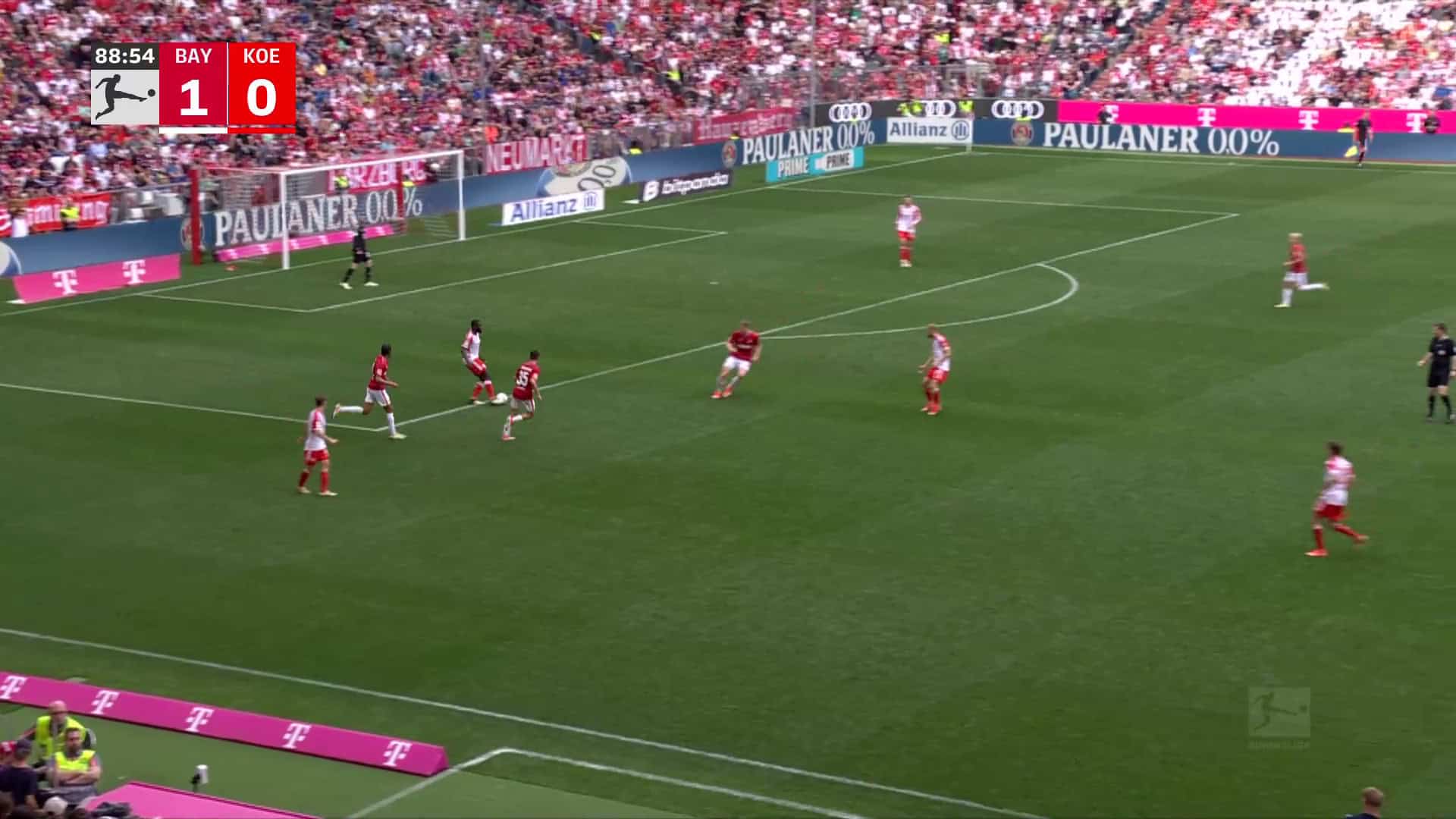
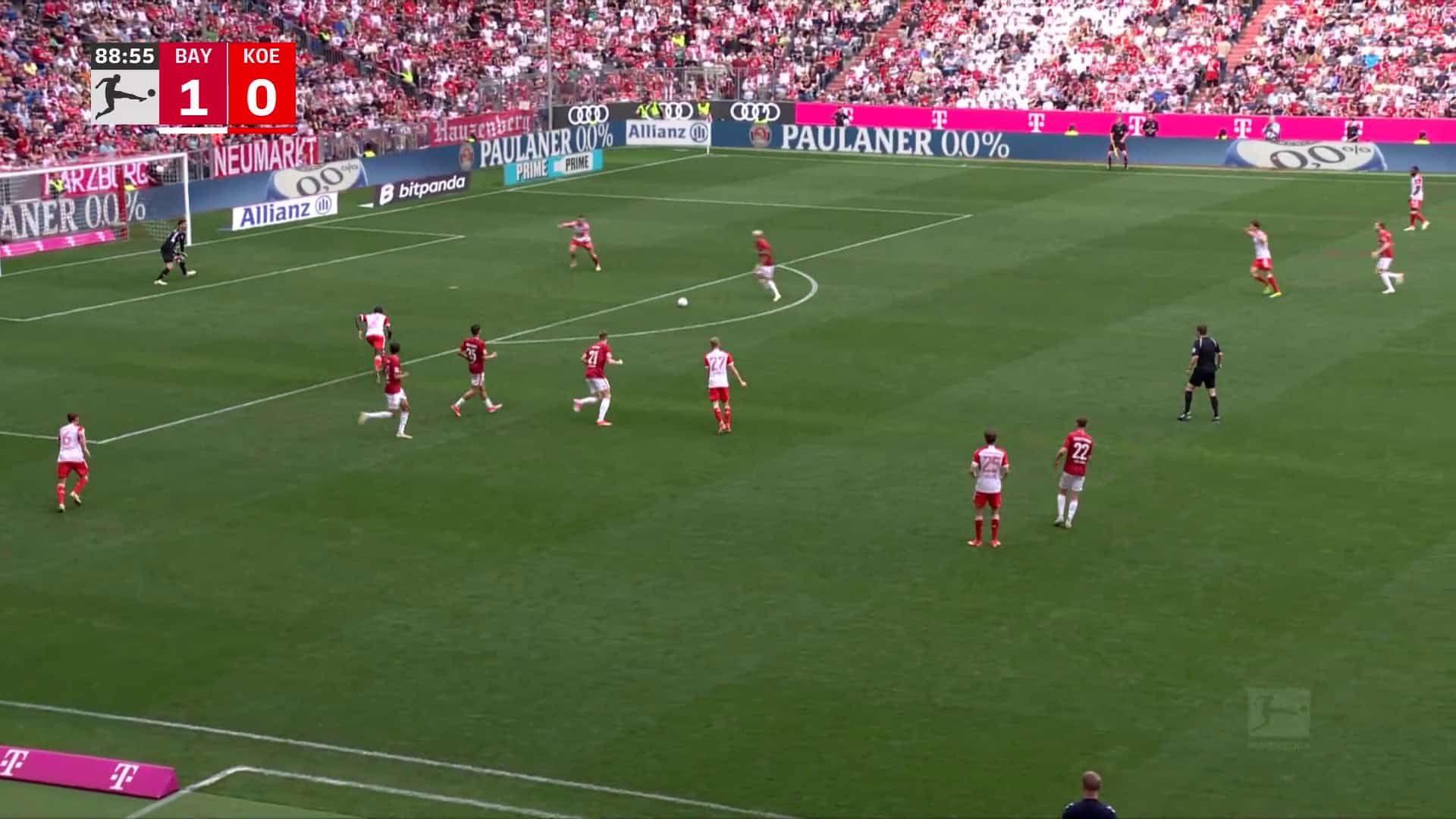
Wrong decisions in tackles are another source of mistakes.
In particular, direct 1v1 duels in and around the penalty area cause Upamecano problems with timing.
Fouls, in particular, have serious consequences, resulting in disciplinary sanctions and dangerous set-piece situations.
One example of this is the 73rd minute of the Bundesliga match against Bayer Leverkusen on 19 March 2023.
Another example is the UEFA Champions League Round of 16 against Lazio.
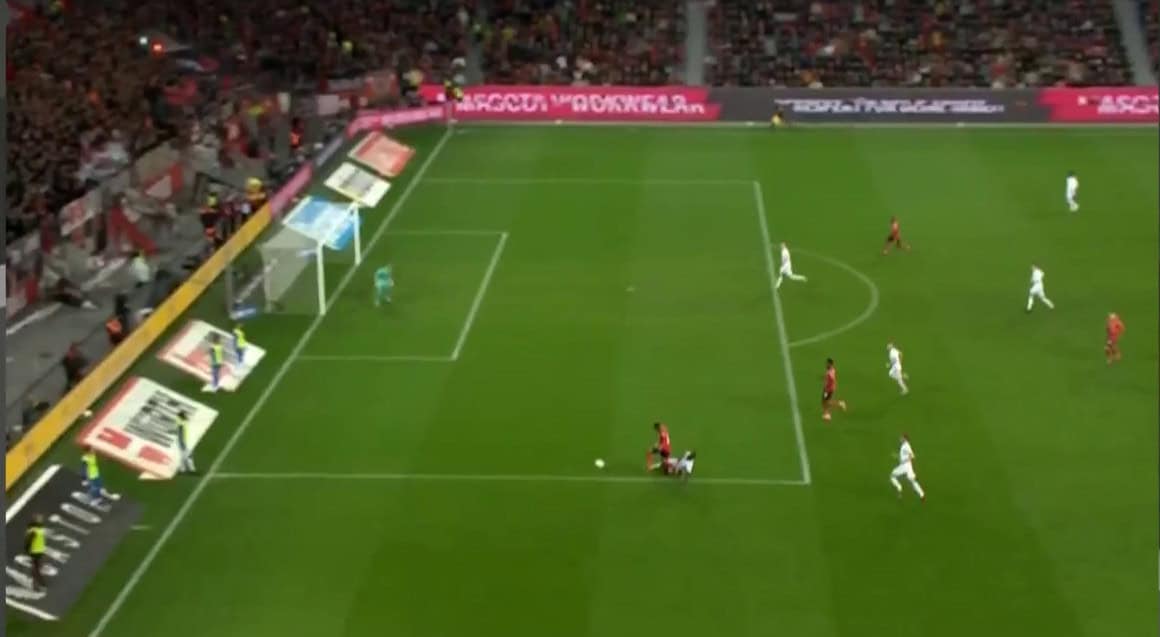
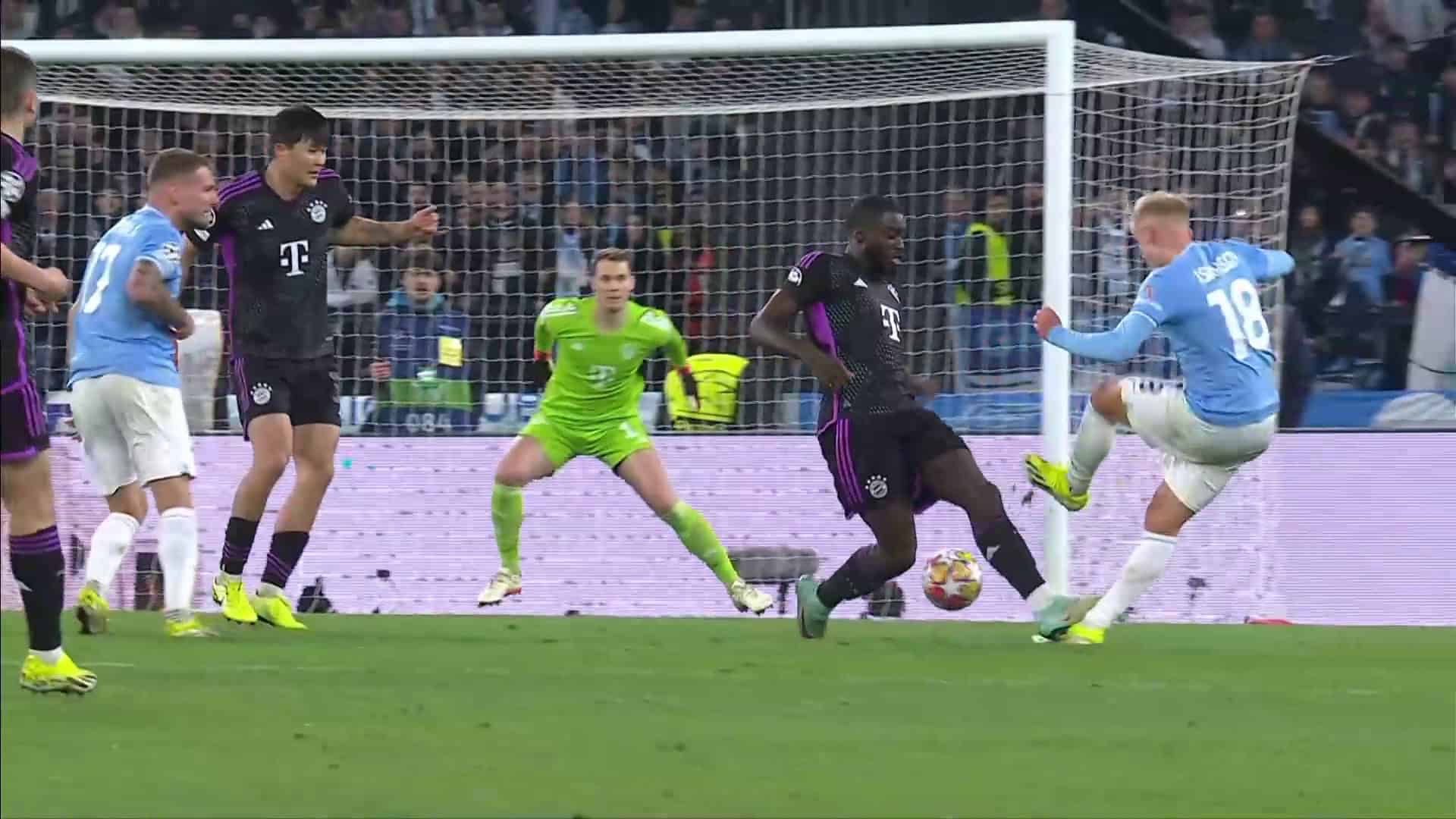
Positional mistakes during transitional actions by the opponent, even with high balls, can lead to dangerous counterattacks due to incorrect positioning in the area or technical mistakes.
Wrong decisions have a particularly large impact on subsequent action in the role of the defender, as they are difficult to defend against.
One example of this is the 43rd minute of the Bundesliga match against Borussia Mönchengladbach on 27 August 2022.
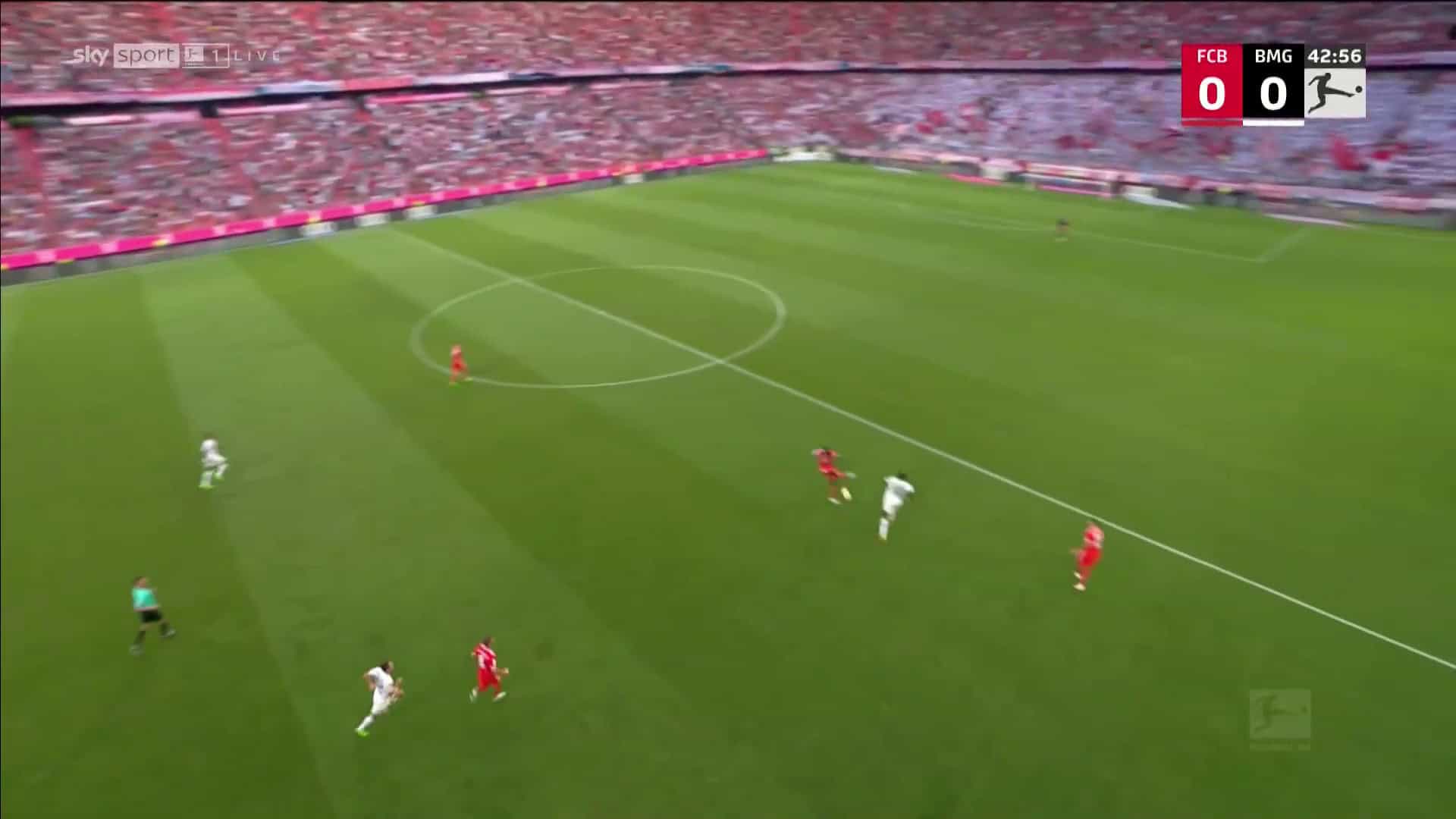
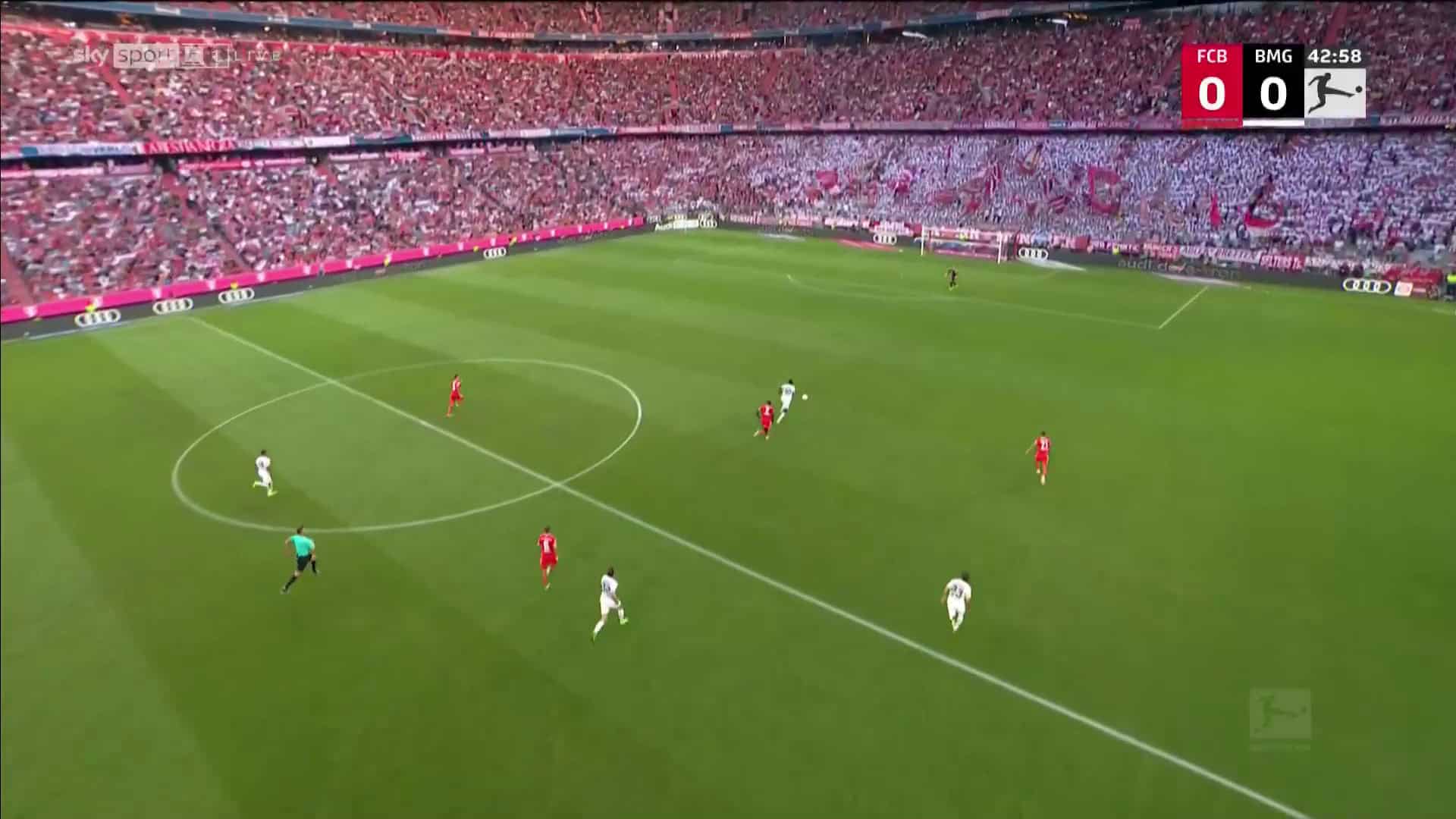
Coordination issues, especially with the goalkeeper, due to a lack of communication led to an increase in the opponent’s unnecessarily dangerous chances.
One example is the 50th minute of the Champions League quarter-final against Manchester City on 11 April 2023.
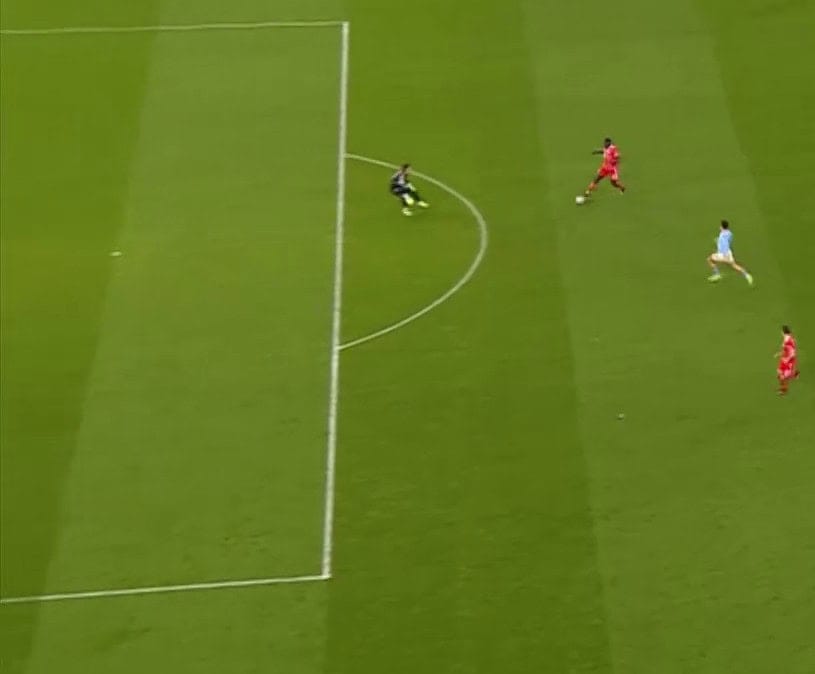
This list is neither exhaustive nor a statistically accurate categorisation of all of Upamecano’s individual mistakes.
The individual mistakes analysed were selected because they repeatedly led to match-deciding scenes in the subsequent action.
Dayot Upamecano Statistics
To deduce from individual sources of mistake, such as Upamecanos tackling mistakes, that the centre-back has particular weaknesses here would be far too short-sighted.
Instead, the following section analyses Upamecano’s statistical characteristics and links them to his individual mistakes.
In order to be able to compare the corresponding statistics, the data of the following four Bundesliga defenders from the 2023/24 Bundesliga season were also analysed: Matthijs de Ligt (formerly FC Bayern), Jonathan Tah (Bayer Leverkusen), Waldemar Anton (VFB Stuttgart), Mats Hummels (formerly Borussia Dortmund).
Firstly, relevant statistics relating to mistakes in the build-up play are analysed.
Upamecano had an average pass completion rate of over 93%.
This put him in line with the average of the other centre-backs analysed.
However, Upamecano clearly stood out with his number of passes played per 90 minutes.
With an average of 81 passes, he had a significantly higher value than other centre-backs.
This cannot be explained by Munich’s high possession rate, which leads to more passes in the game.
Both his team-mate at the time, De Ligt, and Tah, who plays possession-orientated football with coach Xabi Alonso at Leverkusen, only averaged around 65 passes each.
This already provides an initial explanation for Upamecano’s increased individual mistakes.
More passes also mean more misplaced passes.
Statistically speaking, the more serious misplaced passes, in particular, occur more frequently.
It is also worth noting the comparison between the Bundesliga 2023/24 and the 2024 European Championship, where Upamecano was a regular starter in the French centre defence.
Overall, Upamecano played an average of 50 passes per 90 at the European Championships, while he had significantly more actions in his club jersey with 81 — a logical consequence of the different playing styles of the French compared to the Munich team.
The French game is far less centred on possession.
This could be one of the reasons for his “improved” performance in the national team.
Similar data can be found for his tackling behaviour.
With seven defensive duels per 90 minutes, Upamecano contested twice as many as De Ligt.
Furthermore, with 16 tackles per 90 minutes, he is well above the average of all other defenders.
In comparison, the defensively strong Tah averaged 12.5 duels per 90 minutes.
These statistics show that Upamecano is involved in an above-average number of tackles.
Upamecano’s tackle rate is around 60%, which is average, but more duels lead to more tackle mistakes.
Accordingly, Upamecano’s individual mistakes also result from the number of duels he has been involved in.
Video analysis of Upamecano also shows that he has an extremely aggressive style of defence in 1v1s.
This is reflected in his high number of fouls: with 0.98 fouls per 90, he is well above the values of other centre-backs.
This is also reflected in the fact that Upamecano is statistically one of the centre-backs who has the most ball recoveries in moments of counterpressing.
It is logical that Upamecano, with his aggressive defensive style, has difficulties in defence in and around the penalty area as well as in his role as a defender on the backline, as he has to act more cautiously than usual.
It can be said that Upamecano performs significantly more actions per game than most other centre-backs and, therefore, makes more mistakes.
In addition, Upamecano’s aggressive tackling makes him more susceptible to fouls, which is particularly noticeable near the penalty area and when defending on the last line in transitional actions.
Nevertheless, this type of tackling is valuable for any team and can be utilised to good effect, as described in the following section.
Tactical options to reduce mistakes
Individual mistakes can be reduced tactically.
This requires utilising Upamecano’s strengths in the Munich game and avoiding situations in which he tends to make mistakes.
The aim is to minimise the severity of mistakes by reducing the risk of individual actions.
Due to Upamecano’s aforementioned weaknesses in transitional play, the fact that France mainly defend in a defensive pressing style will benefit him.
This means that Upamecano is almost always protected by another team-mate.
Mistakes are not penalised immediately and do not have such a big impact.
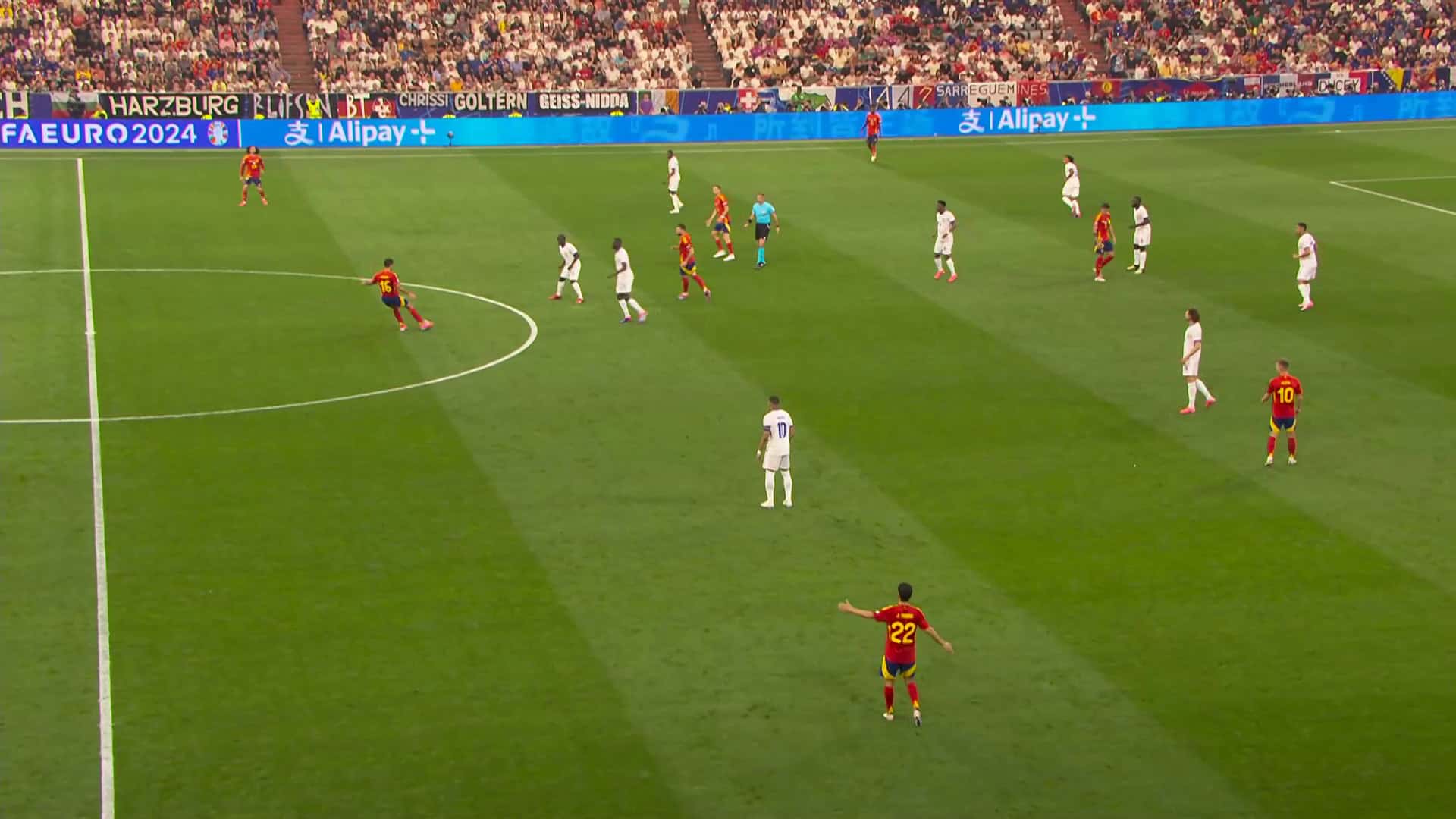
Nevertheless, this is not an option for FC Bayern.
The Bavarian side traditionally play football focused on controlling the game through ball possession.
In addition, Bayern’s style of play is dominated by a high level of attacking pressing.
Therefore, it is important to play effective counterpressing to avoid defensive transitions.
At Euro 2024, the Spaniards hardly allowed any switching moments thanks to their full-backs moving into the half-space and defensive midfielder Rodri in the centre.
The two Spanish centre-backs rarely found themselves in the situation of having to defend a defensive 1v1 on the backline with plenty of space against a technically strong dribbler.
For example, a variant that focuses more on Upamecano’s strengths in defending forward in aggressive counterpressing and attacking pressing would be conceivable.
To avoid Upamecano’s actions on the backline and promote his strengths in counterpressing, it would be possible to reinforce the centre with the advancing Upamecano instead of a full-back moving into the centre.
A 3-2 build-up structure would be possible, in which Upamecano consistently advances into the centre in counterpressing.
Upamecano can take on a more offensive role in counterpressing from a 3-2 build-up structure because when he pushes forward, the space behind him gets covered by the other two build-up players.
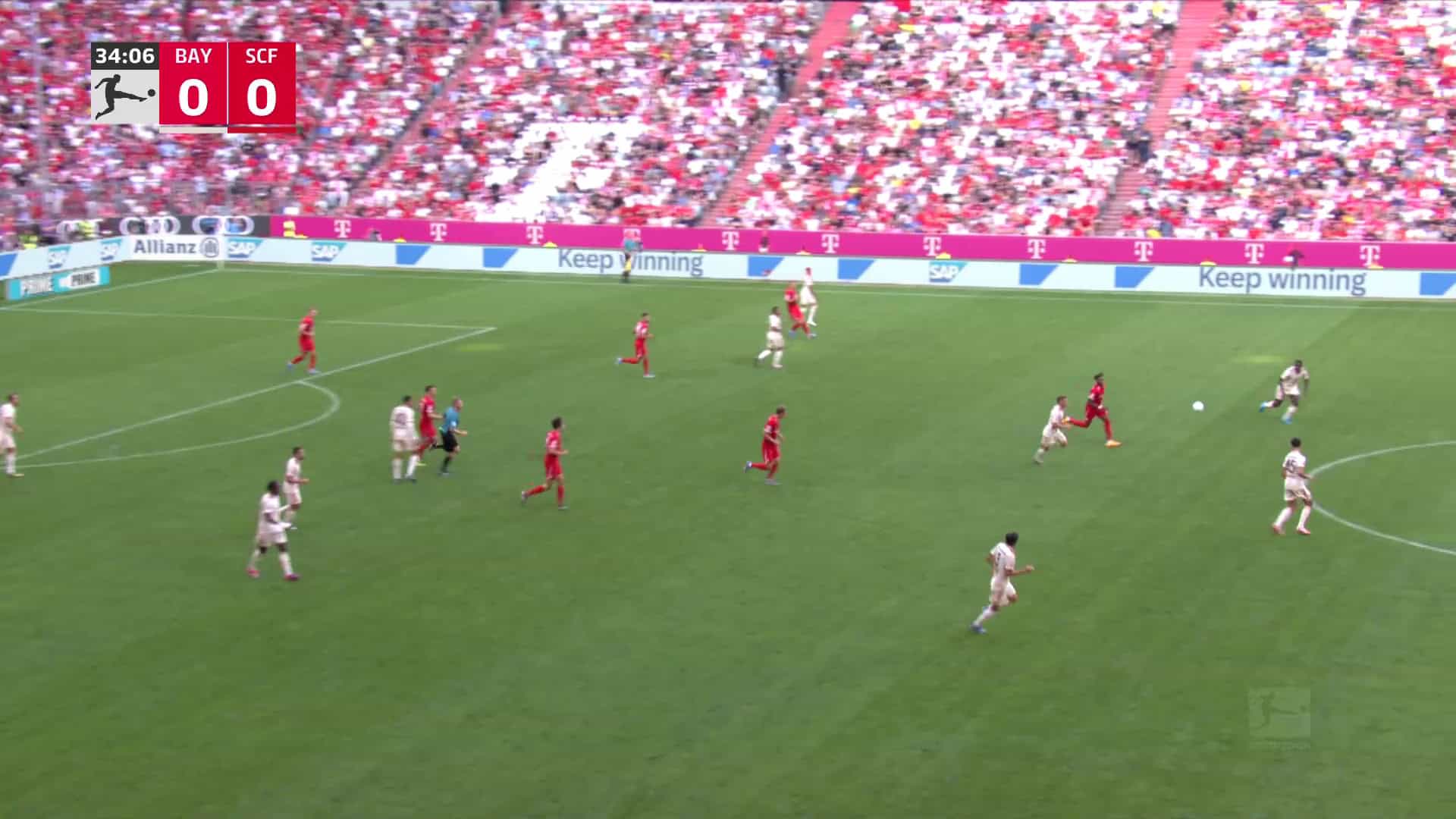
When Upamecano pushes forward, Kim Min-jae and Aleksandar Pavlović could provide cover behind him.
Upamecano’s athleticism and height in attacking transitions after winning the ball also speak in favour of having Upamecano reinforce the centre against the ball.
Especially when winning the ball from counterpressing, opponents are often less well-organised defensively as they are already in an offensive transition phase.
Therefore, in offensive transition situations, Upamecano can bring numerical superiority in the opponent’s box and create goalscoring opportunities, especially by capitalising on crosses.
Aggressive counterpressing also brings the advantage of having to build up under pressure in your own half less frequently.
Preventing opposing attacks leads to fewer build-up actions.
Duels near your own penalty area are also less frequent as they are fought in the opponent’s half.
Another way to reduce the number of duels Upamecano has to deal with is to deploy a defensively strong six-man in front of the defence.
Palinha could increase Upamecano’s performance accordingly.
Further options in relation to tactics can be found in the build-up play to reduce Upamecano’s misplaced passes.
A high goalkeeper line has the advantage of always having an additional passing option and taking pressure off the centre-backs, including Upamecano.
This can be practised perfectly with the strong Manuel Neuer.
Under the new coaching team, the high goalkeeping line has already been utilised more frequently.
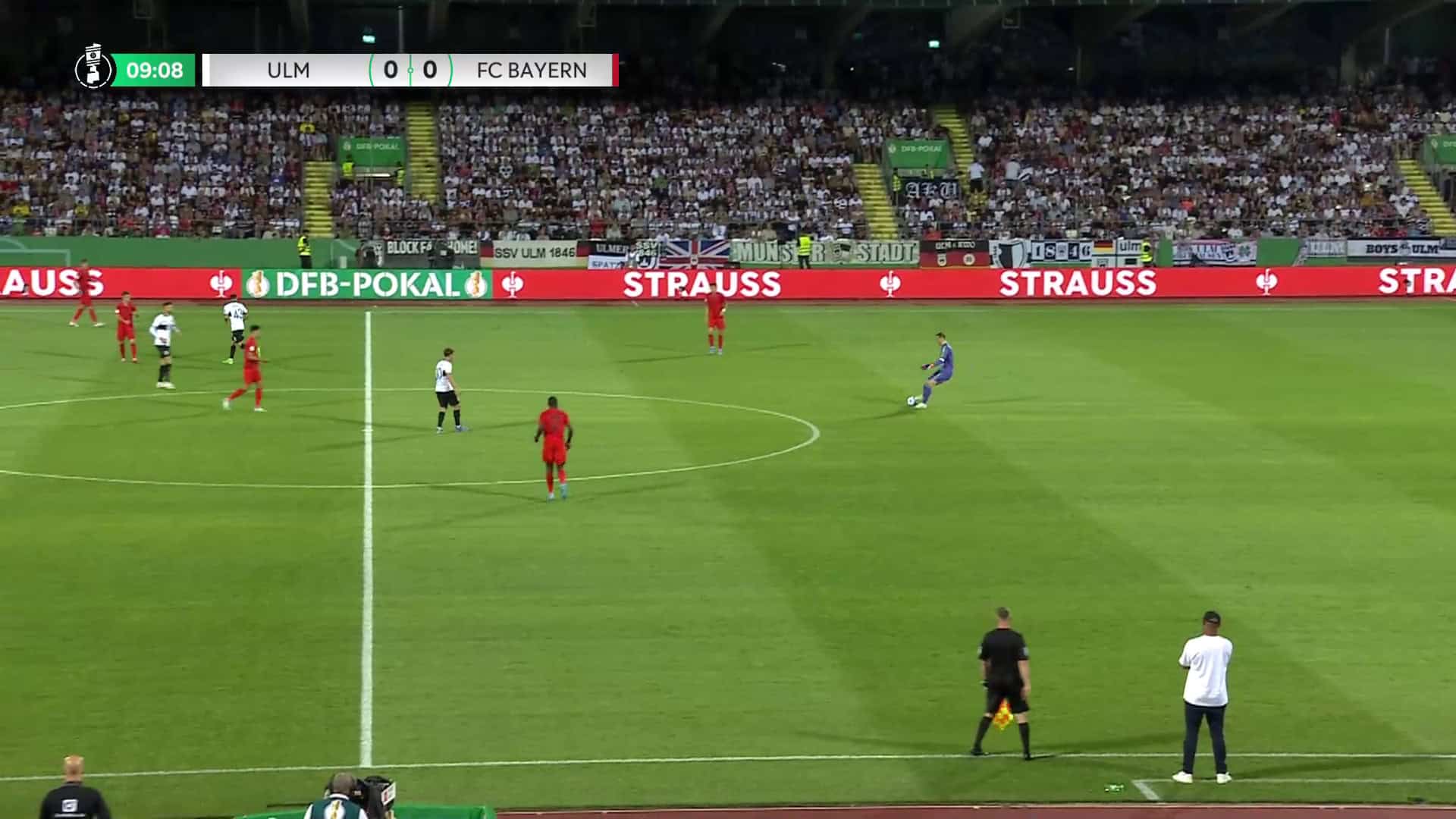
Another source of mistake in Upamecano’s game are coordination problems with team-mates.
These frequently occurred with other Munich newcomers.
This was also the case in the Champions League against Manchester City, with Yann Sommer in Munich’s goal.
Obviously, Upamecano’s strengths are not yet leadership and communication.
Consequently, it is necessary for him to be supported by experienced leaders.
Therefore, it is all the more important that, with Manuel Neuer‘s return, an absolute leader can support Upamecano.
Under the new coaching team led by Vincent Kompany, Upamecano will benefit from Neuer’s significantly higher-up-the-pitch performance against deep-lying opponents.
conclusion
The reasons for Upamecano’s susceptibility to mistakes are by no means solely down to the player himself.
A criticism of Upamecano’s individual mistakes is also a criticism of Upamecano’s role in FC Bayern’s game.
The new coaching team’s current difficulty is finding a suitable role for Upamecano in FC Bayern’s game.
In general, it can be said that individual mistakes are generally trainable, coachable and avoidable.
The coach has an influence on the behaviour of his players, both psychologically and tactically.
This applies not only to Bayern Munich’s professional coaching team but also to every amateur football coach.

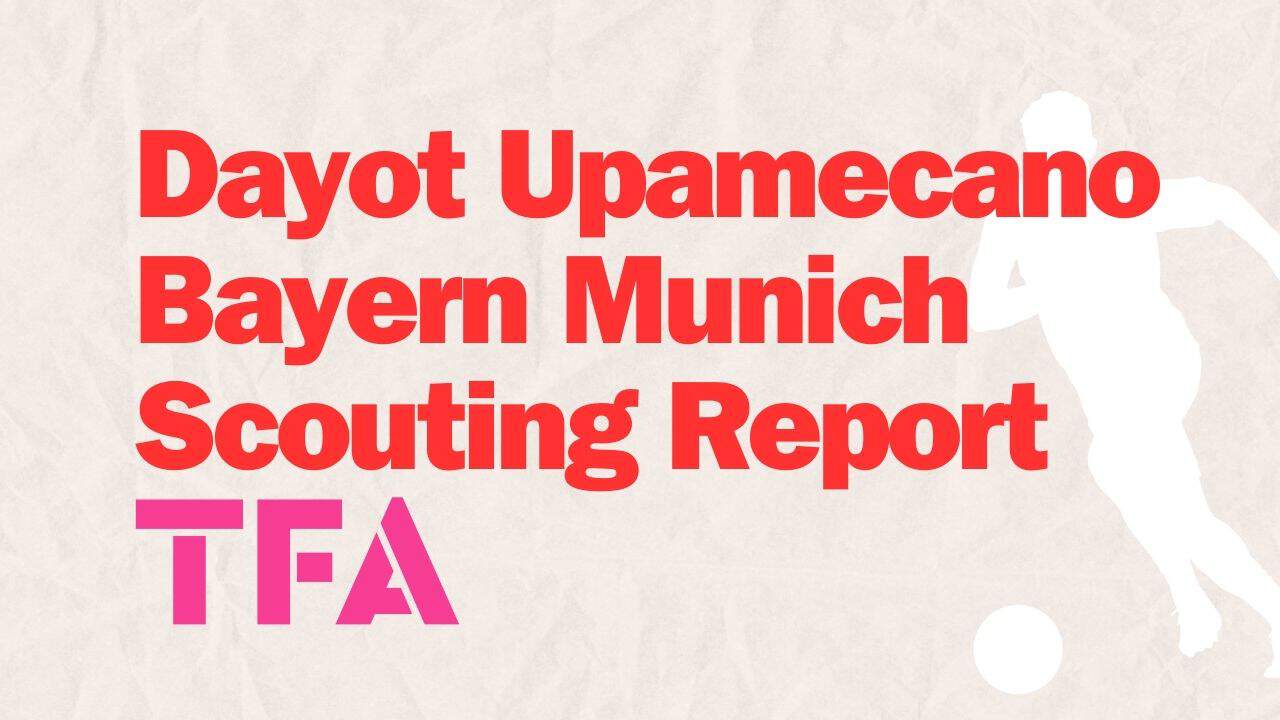




Comments